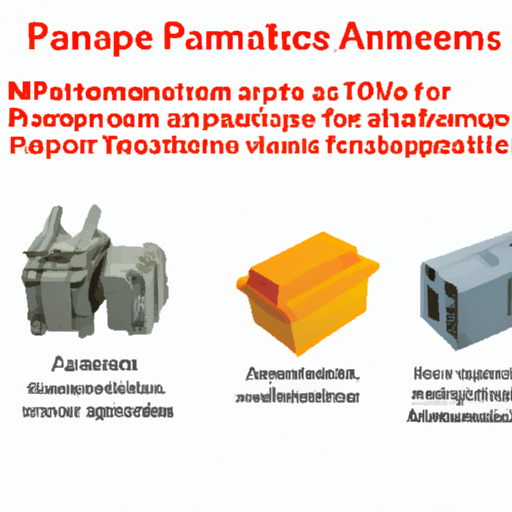Title: Exploring the Key Product Categories of Auto-Coupled Transformers

1. Single-Phase Auto-Coupled Transformers (200 words) Single-phase auto-coupled transformers are widely used in residential, commercial, and industrial settings. They are designed to convert voltage levels for single-phase electrical systems. These transformers consist of a primary winding, a secondary winding, and a magnetic core. Single-phase auto-coupled transformers are available in various power ratings, voltage ratios, and configurations to meet specific requirements. They are commonly used in applications such as lighting, heating, air conditioning, and small machinery.
2. Three-Phase Auto-Coupled Transformers (200 words) Three-phase auto-coupled transformers are crucial for power distribution in industrial and commercial sectors. They are designed to handle higher power loads and provide efficient voltage transformation for three-phase electrical systems. These transformers consist of three primary windings and three secondary windings, connected in a specific configuration. Three-phase auto-coupled transformers are available in different configurations, including delta-delta, delta-star, star-delta, and star-star. They find applications in industries such as manufacturing, mining, oil and gas, and large-scale commercial buildings.
3. Step-Up and Step-Down Auto-Coupled Transformers (250 words) Step-up and step-down auto-coupled transformers are designed to increase or decrease the voltage levels between the primary and secondary windings. Step-up transformers are used to increase the voltage for long-distance power transmission, reducing energy losses. They are commonly employed in power generation plants and substations. Step-down transformers, on the other hand, are used to decrease the voltage for safe distribution to end-users. They are widely used in residential, commercial, and industrial settings.
4. Isolation Auto-Coupled Transformers (250 words) Isolation auto-coupled transformers are primarily used to provide electrical isolation between the input and output circuits. They are designed to protect sensitive equipment from electrical noise, voltage spikes, and ground faults. Isolation transformers are commonly used in medical facilities, data centers, telecommunications, and audio/video systems. They help prevent equipment damage and ensure the safety of personnel.
5. Variable Auto-Coupled Transformers (200 words) Variable auto-coupled transformers, also known as variable autotransformers or variacs, are designed to provide variable voltage output. They consist of a single winding with a movable tap that allows users to adjust the output voltage within a specific range. Variable auto-coupled transformers find applications in laboratory equipment, testing and calibration, and voltage regulation for sensitive devices.
Conclusion (100 words) Auto-coupled transformers play a vital role in electrical systems, enabling efficient voltage transformation and distribution. The key product categories discussed in this article include single-phase, three-phase, step-up, step-down, isolation, and variable auto-coupled transformers. Each category serves specific applications and offers unique features and benefits. Understanding these categories helps in selecting the right transformer for various electrical requirements, ensuring optimal performance and safety.
Title: Exploring the Key Product Categories of Auto-Coupled Transformers

1. Single-Phase Auto-Coupled Transformers (200 words) Single-phase auto-coupled transformers are widely used in residential, commercial, and industrial settings. They are designed to convert voltage levels for single-phase electrical systems. These transformers consist of a primary winding, a secondary winding, and a magnetic core. Single-phase auto-coupled transformers are available in various power ratings, voltage ratios, and configurations to meet specific requirements. They are commonly used in applications such as lighting, heating, air conditioning, and small machinery.
2. Three-Phase Auto-Coupled Transformers (200 words) Three-phase auto-coupled transformers are crucial for power distribution in industrial and commercial sectors. They are designed to handle higher power loads and provide efficient voltage transformation for three-phase electrical systems. These transformers consist of three primary windings and three secondary windings, connected in a specific configuration. Three-phase auto-coupled transformers are available in different configurations, including delta-delta, delta-star, star-delta, and star-star. They find applications in industries such as manufacturing, mining, oil and gas, and large-scale commercial buildings.
3. Step-Up and Step-Down Auto-Coupled Transformers (250 words) Step-up and step-down auto-coupled transformers are designed to increase or decrease the voltage levels between the primary and secondary windings. Step-up transformers are used to increase the voltage for long-distance power transmission, reducing energy losses. They are commonly employed in power generation plants and substations. Step-down transformers, on the other hand, are used to decrease the voltage for safe distribution to end-users. They are widely used in residential, commercial, and industrial settings.
4. Isolation Auto-Coupled Transformers (250 words) Isolation auto-coupled transformers are primarily used to provide electrical isolation between the input and output circuits. They are designed to protect sensitive equipment from electrical noise, voltage spikes, and ground faults. Isolation transformers are commonly used in medical facilities, data centers, telecommunications, and audio/video systems. They help prevent equipment damage and ensure the safety of personnel.
5. Variable Auto-Coupled Transformers (200 words) Variable auto-coupled transformers, also known as variable autotransformers or variacs, are designed to provide variable voltage output. They consist of a single winding with a movable tap that allows users to adjust the output voltage within a specific range. Variable auto-coupled transformers find applications in laboratory equipment, testing and calibration, and voltage regulation for sensitive devices.
Conclusion (100 words) Auto-coupled transformers play a vital role in electrical systems, enabling efficient voltage transformation and distribution. The key product categories discussed in this article include single-phase, three-phase, step-up, step-down, isolation, and variable auto-coupled transformers. Each category serves specific applications and offers unique features and benefits. Understanding these categories helps in selecting the right transformer for various electrical requirements, ensuring optimal performance and safety.